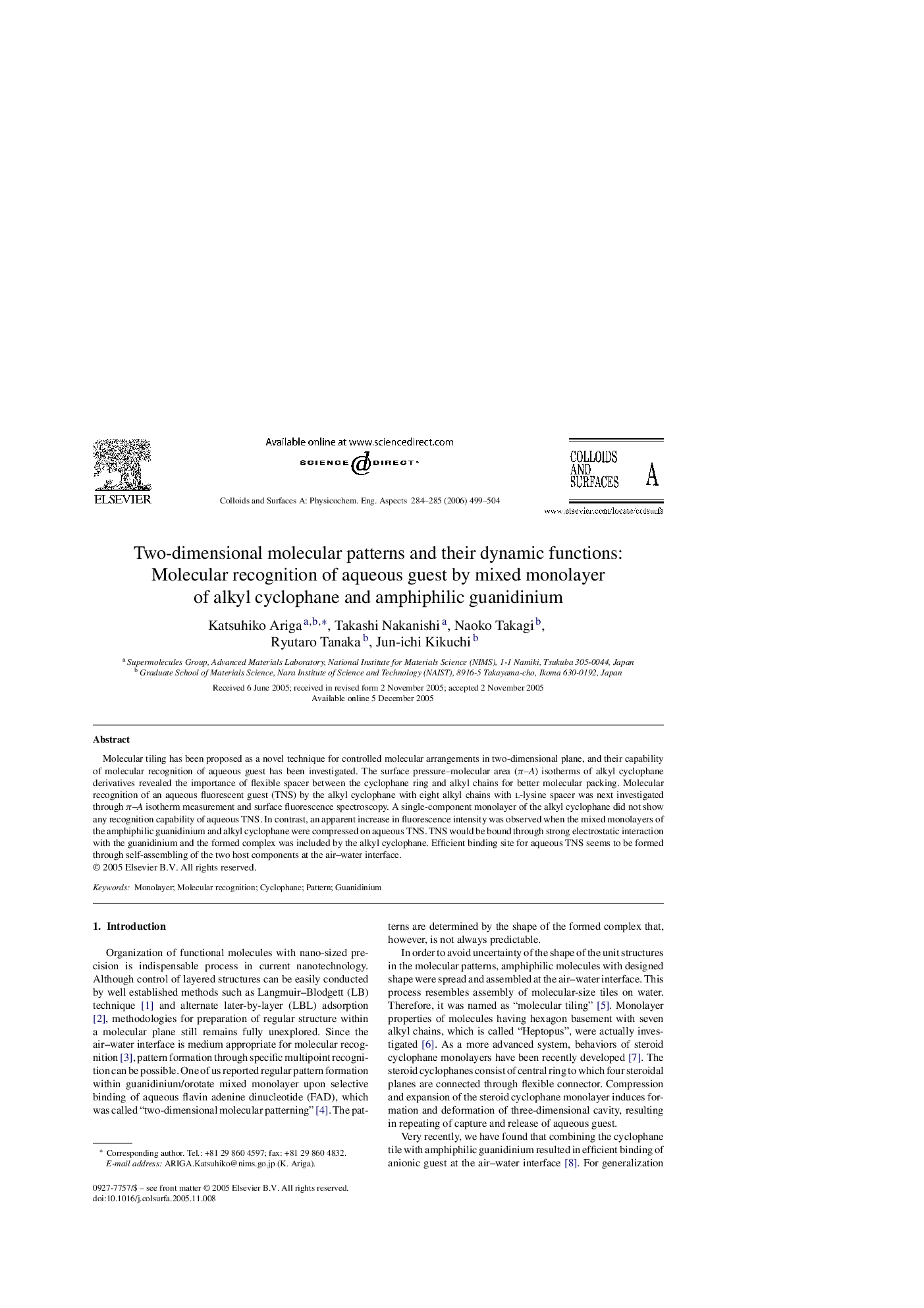| Article ID | Journal | Published Year | Pages | File Type |
|---|---|---|---|---|
| 598299 | Colloids and Surfaces A: Physicochemical and Engineering Aspects | 2006 | 6 Pages |
Molecular tiling has been proposed as a novel technique for controlled molecular arrangements in two-dimensional plane, and their capability of molecular recognition of aqueous guest has been investigated. The surface pressure–molecular area (π–A) isotherms of alkyl cyclophane derivatives revealed the importance of flexible spacer between the cyclophane ring and alkyl chains for better molecular packing. Molecular recognition of an aqueous fluorescent guest (TNS) by the alkyl cyclophane with eight alkyl chains with l-lysine spacer was next investigated through π–A isotherm measurement and surface fluorescence spectroscopy. A single-component monolayer of the alkyl cyclophane did not show any recognition capability of aqueous TNS. In contrast, an apparent increase in fluorescence intensity was observed when the mixed monolayers of the amphiphilic guanidinium and alkyl cyclophane were compressed on aqueous TNS. TNS would be bound through strong electrostatic interaction with the guanidinium and the formed complex was included by the alkyl cyclophane. Efficient binding site for aqueous TNS seems to be formed through self-assembling of the two host components at the air–water interface.
